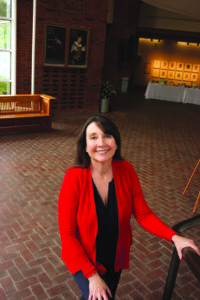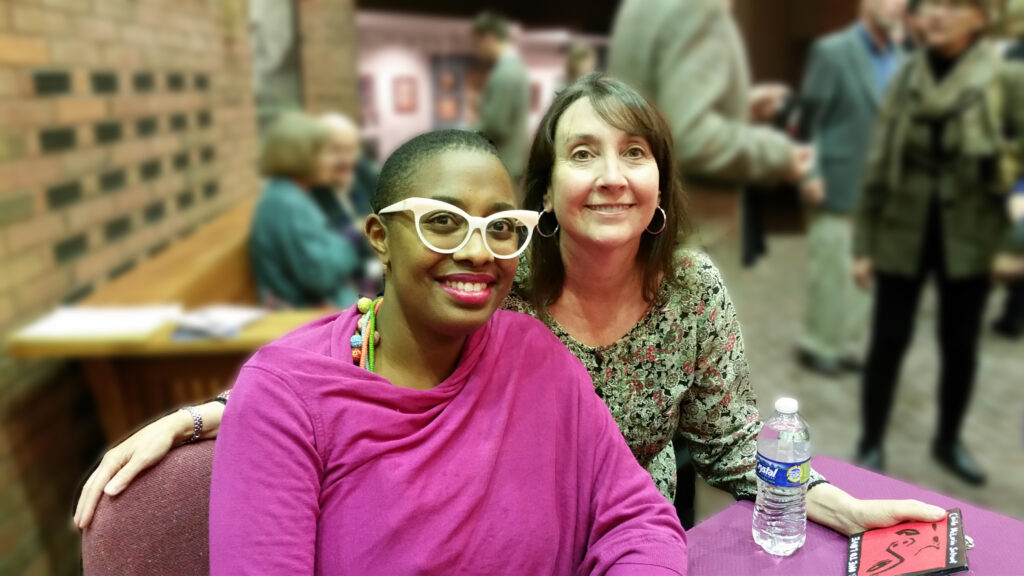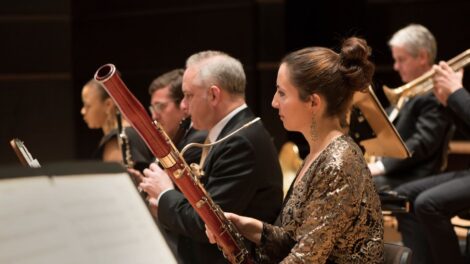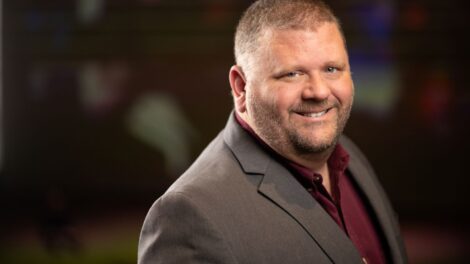Celebrating Williams Center’s 40th anniversary: Reflections from Hollis Ashby
By Bryan Hay
Hollis Ashby has long believed there’s a magical acoustic formula that makes performances on the main stage at Williams Center for the Arts memorable.
“Do you know what the secret is? One, it’s the hall itself, the acoustics in the hall,” says Ashby, who served as the second artistic and executive director of Williams Center from 2014 until May 2023. “You hear every note. It’s just the way the hall is constructed and the meticulous placement of the acoustical shells.”
There isn’t a bad seat in Williams Center, where for 40 years Lafayette College has presented the best established and emerging musicians, dancers, and artists from across the globe. With only 400 seats, audiences experience acoustically visceral performances bathed in a soundscape projected from the mixture of fabric-covered surfaces, which muffle the sound, and bare wood, plaster, and plastic, which reflect it.
Yet Ashby credits sound engineer Tim Frey as the most important ingredient in the formula. Frey instinctively knows how to place performers on the stage, often making the slightest of adjustments to maximize their presence onstage and the enjoyment of listeners.
“For all of these reasons, it’s just a great hall to experience the performing arts,” says Ashby, who put together the 40tth anniversary Performance Series season as her final act.

Hollis Ashby
Immediately before arriving at Lafayette in August 2014, Ashby, with 30 years’ experience in the performing arts, served as associate director of Cal Performances at UC Berkeley, one of the largest performing arts presenters in California and one of the most influential arts institutions in the world.
She was drawn to the intimacy of Williams Center, which, under Ellis Finger, its first director, established itself immediately for its programming quality.
“It has had a unique artistic profile since it opened in 1983,” Ashby says. “It was the only game in town when it opened, and Ellis set the course immediately by presenting the Guarneri Quartet, which, at the time, was widely considered the best string quartet in the world, not just the United States. That set the tone for the quality of work that would come. It etched an artistic profile for itself.”
Ashby followed Finger’s example of bringing the highest caliber of art to Williams Center.
“We didn’t say, well, now it’s time to bring in musical theater. Because there were venues that did Broadway bus-and-truck shows,” she recalls. “We didn’t have to compete with that. And we didn’t have to compete with magic shows, or with Elvis tribute shows or Beatles tribute bands. The public realized they were going to get something here that they couldn’t get anywhere else.”
With Easton’s close proximity to major air hubs in the mid-Atlantic, Williams Center has benefited from European artists who would eagerly add a stop at Lafayette on their East Coast concert tours. “And they would always want to come back,” Ashby says.
Keeping a rolling curated list of artists in her head, Ashby enjoyed getting to know the performers and their agencies over the years, which helped her design each season of the Performance Series.
“With that ongoing list in my head, it allowed me to think if I can’t get that great Baroque violinist one year, maybe there’s a great harpsichordist I can get instead,” she says. “It also helped me consider the interests expressed on campus and in the community for certain types of performances.
“Another consideration when we booked chamber orchestras or chamber ensembles was when they were doing a specialized original program that had a shelf life of only a couple of years,” Ashby notes. “If you miss that window, it’s not going to happen again. So, there was often a timing factor.”
Beyond experiencing the artistry displayed onstage, audiences enjoy the additional thrill of interacting with performers in the lobby after a performance.
“You’re encouraged to linger and talk about your reactions to the performance and have a chance to express to the musicians or the performers how you feel about it,” Ashby says. “Performers love to stay and meet with the public and sometimes have no idea about how engaged our audiences are. They always want to come back because of that.”
Under her tenure, Ashby has welcomed audience members from beyond the Lehigh Valley, including regulars from New York, Kentucky, Florida, Georgia, and Maryland, who stay and eat locally and enjoy the campus. “That’s good for the local economy because we have people staying here and eating in our restaurants,” she says. “And it’s been good for Lafayette to gain additional interest from our visiting audience members.”
“The most gratifying aspect of my work here, however, has been creating opportunity for the students to interact with artists in the classroom, both formally and casually,” she adds. “Having a masterclass with the taiko musicians of Kodo, participating in a lecture/demonstration by Balinese musicians and dancers, and having student composers’ works performed by Hub New Music deepens Lafayette students’ skills and understanding of unique are forms.”
Asked to name her most memorable performances over her time at the Williams Center, Ashby quickly references that rich mental list of hers.
“French countertenor Philippe Jaroussky in 2016. That was one of the most sublime performances we’ve ever had,” she says without hesitation. “The actor Julian Sands did an evening of Harold Pinter readings. And the jazz saxophonist Charles Lloyd was here with his group and really, that was one of the greatest musical experiences ever. Jazz singer Cécile McLorin Salvant and Mark Morris Dance Group, just incredible. Tenor Mark Padmore and pianist Paul Lewis’ performance of Winterreise was stunning. There are just too many to recall.”

Jazz singer Cécile McLorin Salvant (left) with Hollis Ashby
“The Williams Center has always been held in very high regard,” she adds. “A point of fact is that Ellis Finger and I have both received the Presenter of the Year Award from the association of North American Performing Arts Managers and Agents. The Williams Center is the only organization in the country that’s received it twice.
“You can come to the Williams Center for a very refined performance by Lea Desandre and the Jupiter Ensemble, and you can come here to hear Wynton Marsalis and the Lincoln Center Jazz Orchestra. We could probably sell out the stadium with Wynton Marsalis, but it wouldn’t be the same experience.”

